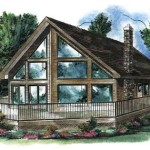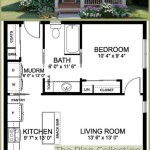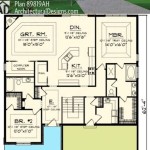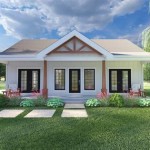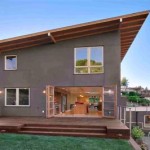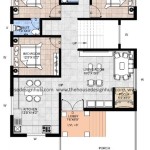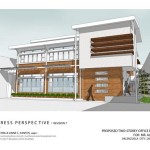Designing a 2000 Square Foot House Plan: Considerations and Tips
A 2000 square foot house offers a comfortable and spacious living environment for families and individuals alike. This size allows for a good balance of living, sleeping, and entertaining spaces. When designing a 2000 square foot house plan, several key considerations come into play, ensuring the floor plan effectively meets the needs and preferences of the occupants. This article will delve into the essential aspects of designing a 2000 square foot house plan, providing guidance and insights to help you create a functional and aesthetically pleasing home.
1. Defining the House's Purpose and Occupants
Before embarking on the design process, it's crucial to define the purpose and occupants of the house. Factors such as the number of bedrooms and bathrooms, the need for a home office or guest room, and the overall lifestyle of the family should be carefully considered. For instance, a family with young children may prioritize spacious bedrooms and play areas, while a retired couple might prefer a larger master suite and a dedicated hobby room. Identifying these specific needs will inform the layout and functionality of the house plan.
2. Optimizing Space Allocation
Efficient space allocation plays a crucial role in maximizing the functionality of a 2000 square foot house plan. Creating a balance between open and closed spaces is essential. Open-concept living areas can enhance social interaction and create a sense of spaciousness, while enclosed rooms provide privacy and dedicated spaces for specific activities. The kitchen, living room, and dining area can be combined to form a central hub for family life, while separate bedrooms and bathrooms offer personal retreats. Consider incorporating flexible spaces such as a den or bonus room that can serve multiple purposes, adapting to changing needs over time.
3. Prioritizing Flow and Functionality
The flow and functionality of a house plan are paramount to ensuring a comfortable and user-friendly living experience. The connection between various rooms should be seamless, facilitating movement and reducing unnecessary travel. Strategically placed hallways and doorways can optimize traffic flow, preventing bottlenecks and creating a sense of openness. Careful consideration should be given to the placement of appliances, furniture, and fixtures within each room, maximizing usability and minimizing clutter.
4. Incorporating Natural Light and Ventilation
Natural light and ventilation are essential elements for creating a healthy and inviting living environment. Large windows and skylights should be incorporated to maximize natural light penetration, brightening the interior and reducing the need for artificial lighting during the day. Proper ventilation is equally important, ensuring fresh air circulation and mitigating moisture buildup. Carefully positioned windows and doors can create cross-ventilation, promoting airflow throughout the house. This is particularly crucial in kitchens and bathrooms, where moisture levels tend to be higher.
5. Emphasizing Aesthetics and Personalization
While functionality is a primary concern, the aesthetics of a house plan should not be overlooked. Incorporating personal preferences and design elements can create a sense of individuality and style. From choosing exterior finishes and landscaping to selecting interior colors, fixtures, and furnishings, there are countless ways to personalize the house to reflect the occupants' unique tastes. The use of architectural details, such as vaulted ceilings, exposed beams, or intricate moldings, can add visual interest and enhance the overall aesthetic appeal of the house.
6. Considering Energy Efficiency
Designing a home with energy efficiency in mind is beneficial for both the environment and your wallet. Incorporating features such as proper insulation, energy-efficient windows and doors, and a high-performance HVAC system can significantly reduce energy consumption and utility costs. Consider using sustainable materials during construction, such as bamboo or recycled wood, to minimize the environmental impact of the house.

2 000 Sq Ft House Plans Houseplans Blog Com

2 000 Sq Ft House Plans Houseplans Blog Com

2 000 Sq Ft House Plans Houseplans Blog Com

Traditional Style House Plan 4 Beds 2 5 Baths 2000 Sq Ft 56 578 Craftsman Plans

2 000 Sq Ft House Plans Houseplans Blog Com

Farmhouse House Plan With 2000 Square Feet And 4 Bedrooms S From Dream Home Source Country Plans One Story Style

The Knollwood 8569 3 Bedrooms And 5 Baths House Designers

House Plan 59114 Traditional Style With 2000 Sq Ft 3 Bed 2 Ba

House Plan 142 1092 4 Bdrm 2 000 Sq Ft Acadian Home Theplancollection

Big Small Homes 2 200 Sq Ft House Plans Blog Eplans Com

